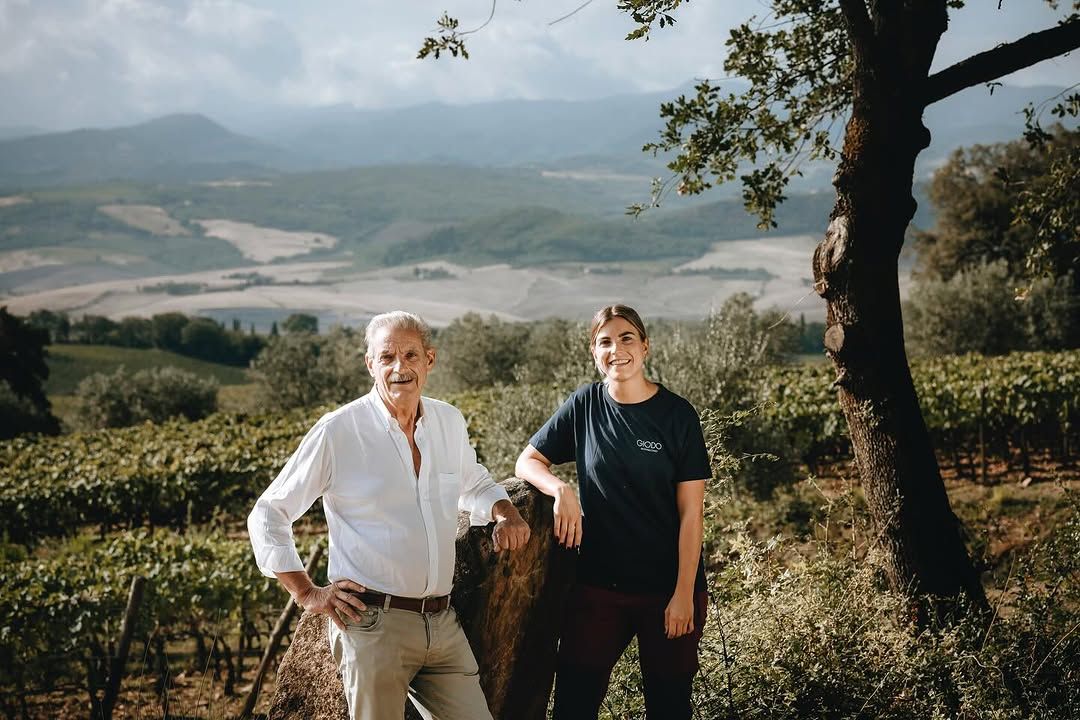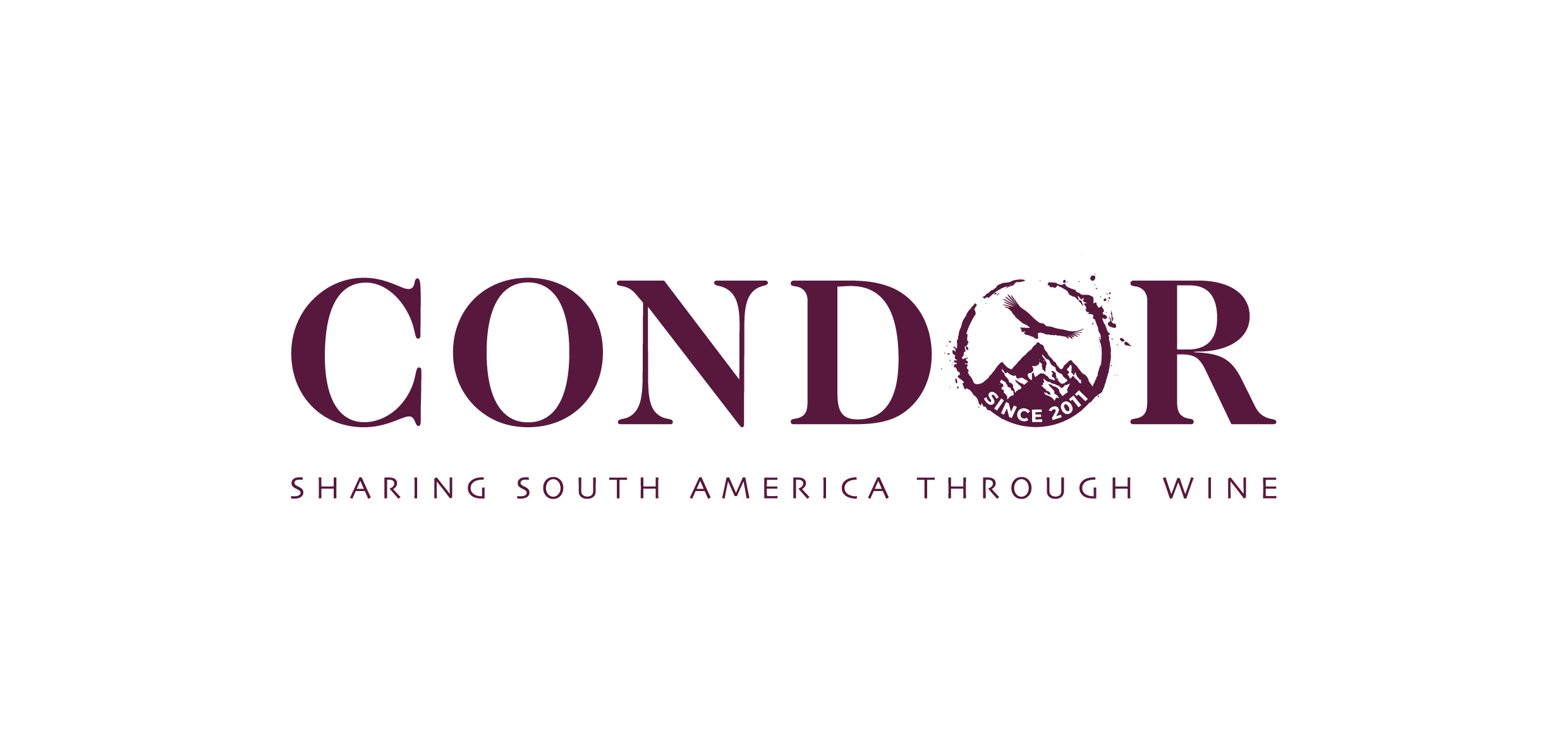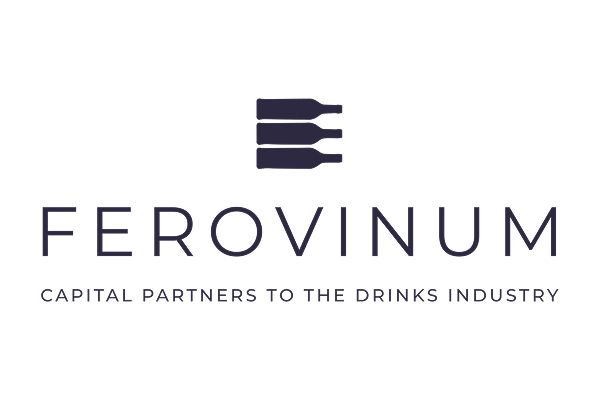‘It’s not what you know it’s who you know’ the saying goes. In the case of Carlo Ferrini it’s a case of both. The world-famous winemaker had been a wine consultant with over 30 years before he set up Podere Giodo, working right across Italy with the likes of Castello di Fonterutoli, Barone Ricasoli, Brancaia, San Leonardo and Pietradolce to name just a few.
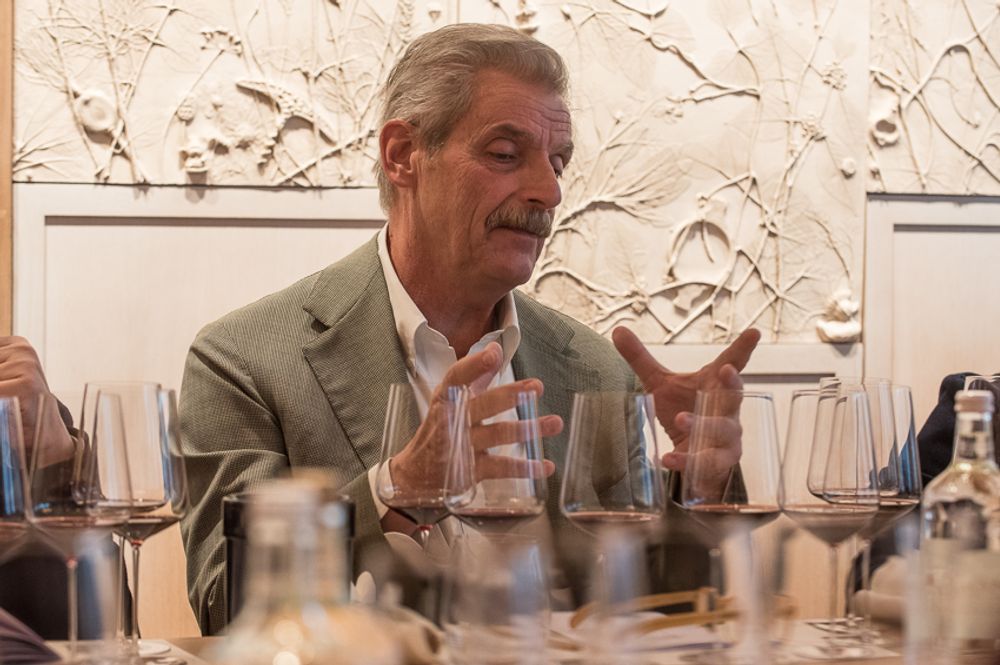
Sangiovese in his veins: Carlo Ferrini explaining technique at London's Hide restaurant, 2019
The dream becomes reality
Carlo had also been a major player in 'Chianti Classico 2000', a research project which led to the widespread replanting of the Chianti vineyards; his knowledge of Sangiovese’s behaviour and winemaking potential is second to none, regarding the appropriate rootstocks, vineyard layout, vine density, training systems and soil management methods.
With Sangiovese for blood, it was only natural that when Carlo decided to realise the dream of having his own estate to make ‘the perfect wine’ he would pick Montalcino. After all, he had a forensic knowledge of the soils and topography of this region, having spent his life in other people’s vineyards and wineries.
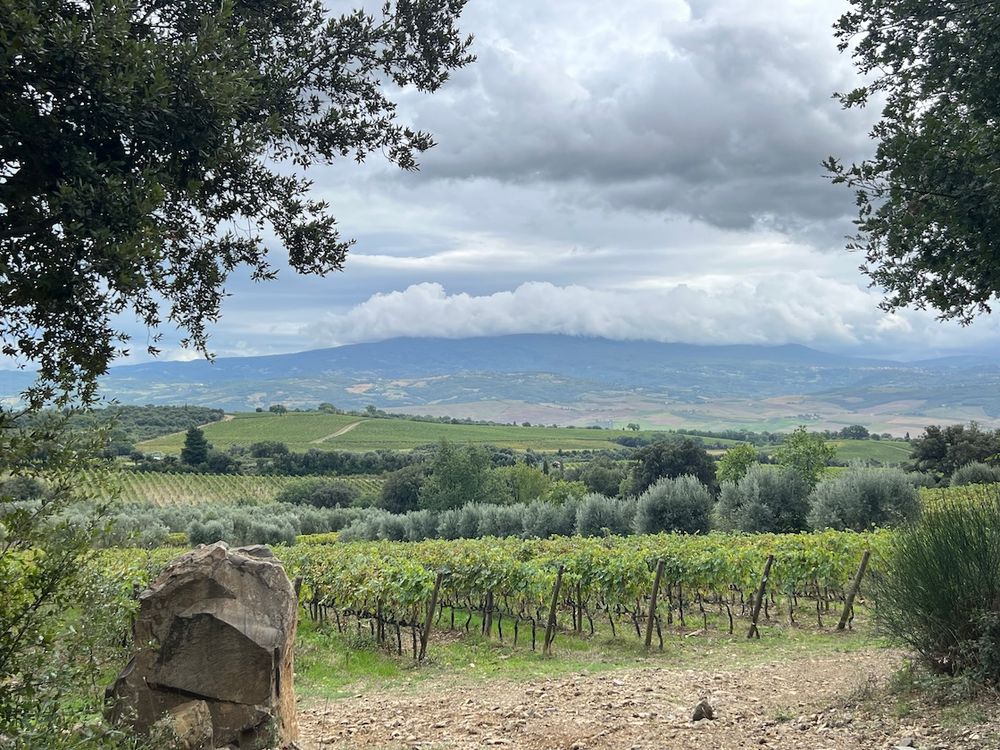
One of the most beautiful regions of Italy: this South-East facing slope is made for Sangiovese
In 2000, when he found a hectare of vineyard in the right location off the road that connects Sant’Angelo to Sant’Antimo 300m up, he bought it and then cleared three adjoining parcels, planting exactly the right clones of Sangiovese that he knew would work on these South-East facing slopes – eight clones that were all low yield and low vigour, producing loose-packed bunches with small berries.
He later found a higher plot – at 400m – and has extended the vineyards to six hectares, building a state-of-the-art, fully-sustainable winery from scratch, hidden into the landscape with the aim of producing the most elegant, purest wines possible.
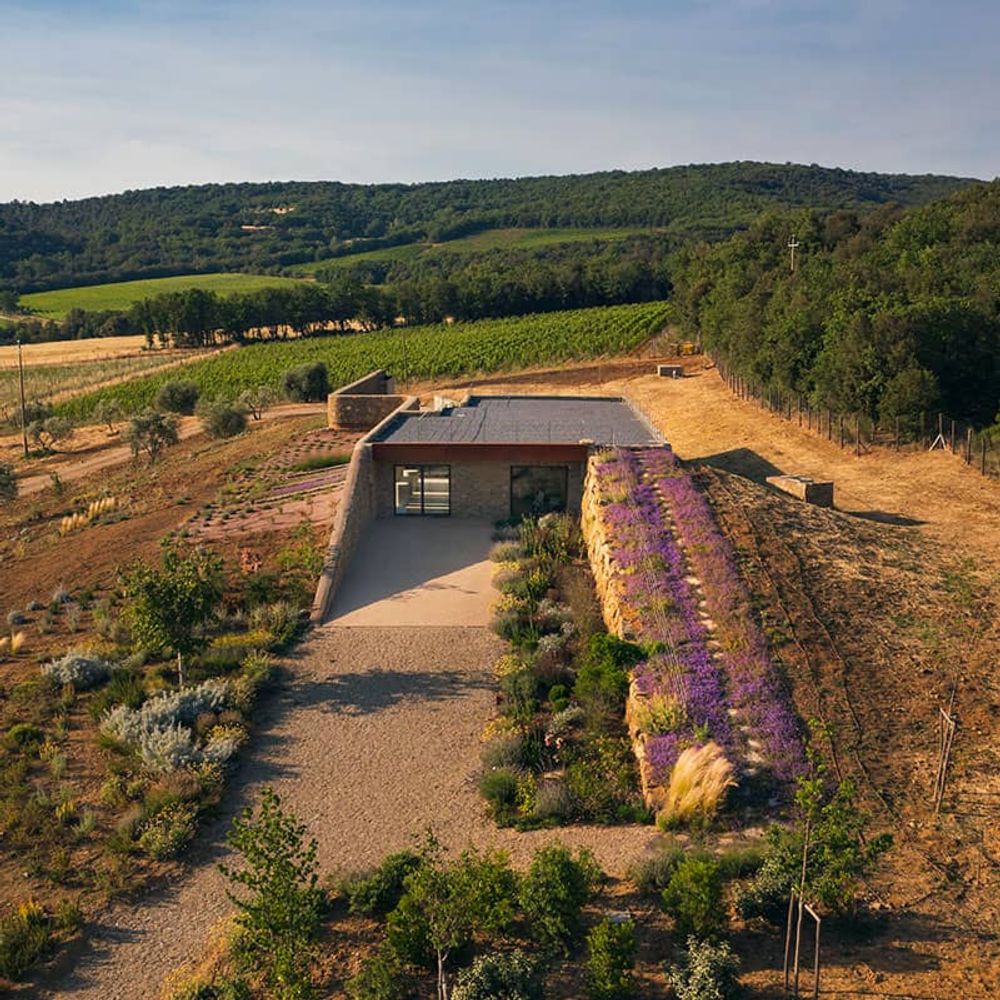
The Giodo winery: hard to believe there is a fully functioning modern winery underground
He then named the winery Giodo after his mother and father GIOvanna and DONatello which, in Italy basically means you’re not going to screw up – it’s the ultimate act of putting your heart on your sleeve.
Visiting Giodo in harvest
After visiting the Giodo estate at the tail end of the 2024 harvest, it was telling that the winemaker who was my next stop put it thus: “When Carlo decided it was time to make his own wine he went straight to the top.”
And how.
It is unsurprising given his knowledge, skill and reputation that Carlo would ‘hit the jackpot’ from day one. Even before Giodo’s first vintage in 2009, Carlo was named Gambero Rosso’s Winemaker of the Year in 2000, AIS’s winemaker of the year in 2003 and Wine Enthusiast’s winemaker of the year four years later.
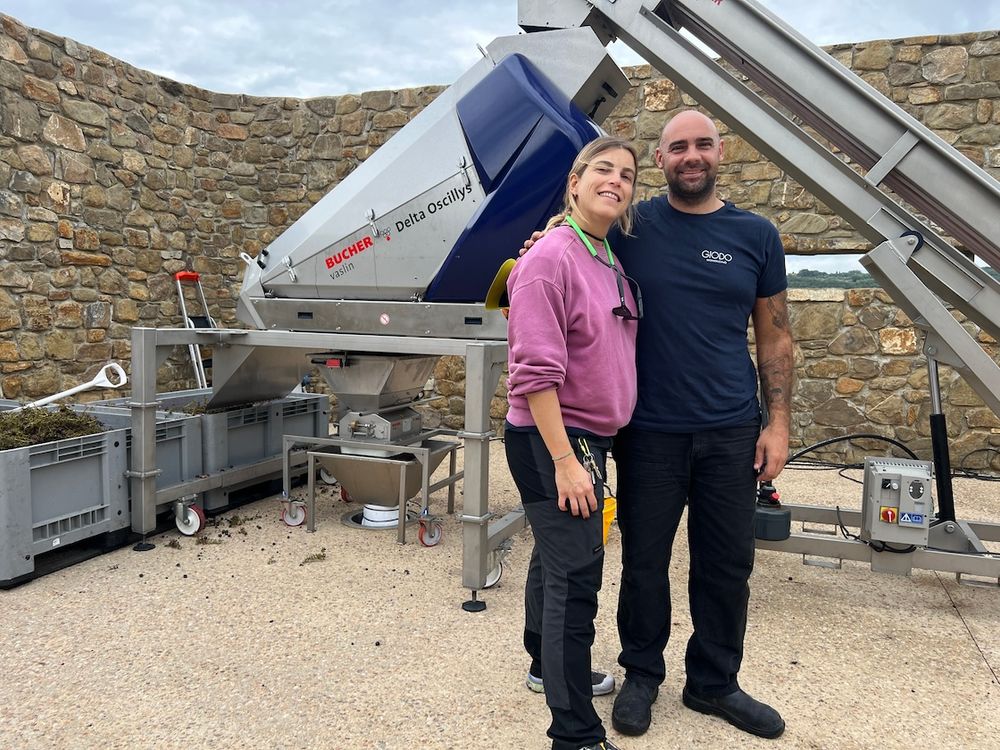
Bianca and Ricardo run Giodo day-to-day. At the time of the visit Bianca was 8 months pregnant - and still harvesting full-on!
When I first tried these wines in London’s Hide restaurant in 2019 with Carlo and his daughter Bianca, who now runs the estate with her partner Ricardo Ferrari, the assembled group of wine experts including Jancis Robinson MW had heads turned. They were incredible. Visiting the estate and trying the wines again in situ. was not only a confirmation of their excellence but also how smart an operation Giodo is – simple, sleek, modern and efficient – with the purity and finesse leaping out of the wines.
They make just two wines – the Giodo Brunello di Montalcino – which I would put in the same camp as Poggio di Sotto in that it is a smart, terroir-driven wine with an elegance and beauty unencumbered by heft and tannin. And the La Quinta Toscana Rosso IGT which is an IGT wine by name only, really being a Rosso in disguise, the vineyards sited just outside the reaches of Brunello.
“It used to be that you could buy a permit for Brunello and attach it to an existing vineyard but that is no longer the case,” Bianca explains, saying that at 2500 hectares of Brunello and 400 hectares of Rosso the Consorzio has ceased further expansion.
Although the Giodo prices have moved up a notch since that first tasting they still deliver great value. I bought a 6-pack of the 2019 Brunello di Montalcino I tasted last autumn as soon as I got back from my trip to Tuscany (just before Suckling awarded it 99 points) and as for La Quinta, as soon as I started researching this article I got side-tracked and ended up buying a full case of the 2019! It is that good and that much of a steal.
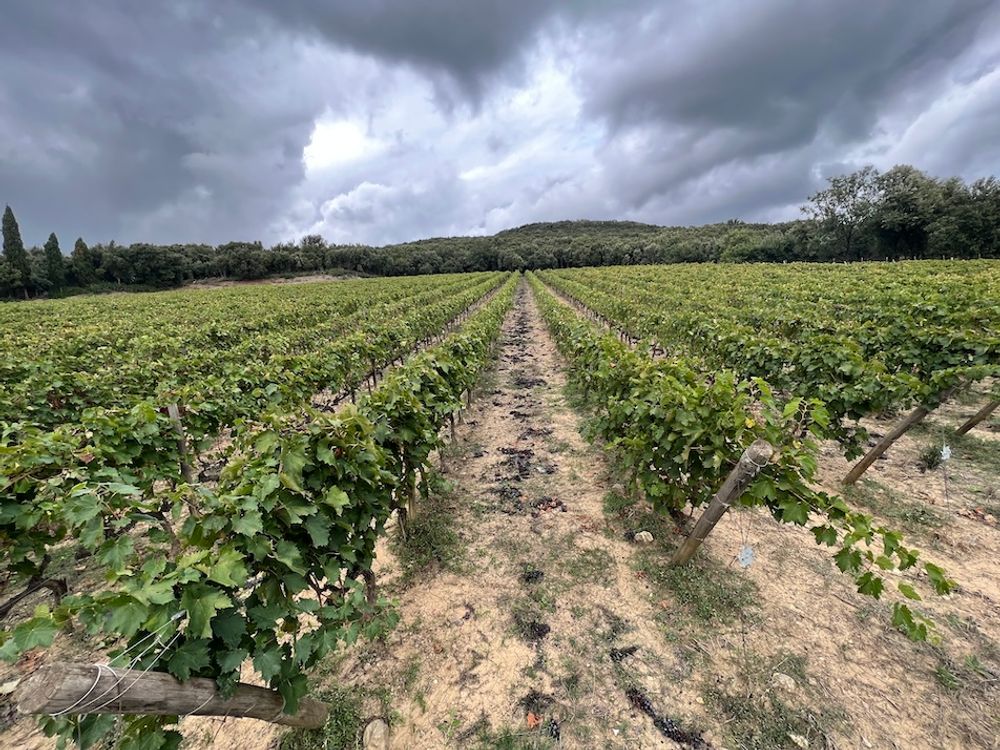
The original one-hectare vineyard. Note the amount of bunches discarded.
The quest for excellence
“We have three goals: elegance, elegance and elegance,” Bianca explains as we stand in their first ‘historic’ vineyard with olive and cypress trees stretching out into the distance, “we like great acidity, good structure and a long finish in the mouth. Our style is one where you prefer to drink it with friends after dinner and finish the bottle – you can drink from first release or keep them for 20 years.”
This vineyard is part of the original nucleus of three hectares of vines that they have kept surrounded by seven hectares of forest – a canny place to plant Sangiovese alright, protected as it is from frost, heat and humidity. Vines are planted to 6,600 per hectare density, all spurred cordon with cover crops of legumes between rows.
The remaining three hectares is 100m further up a rutted track and is where the grapes are grown for La Quinta and where the winery is located.
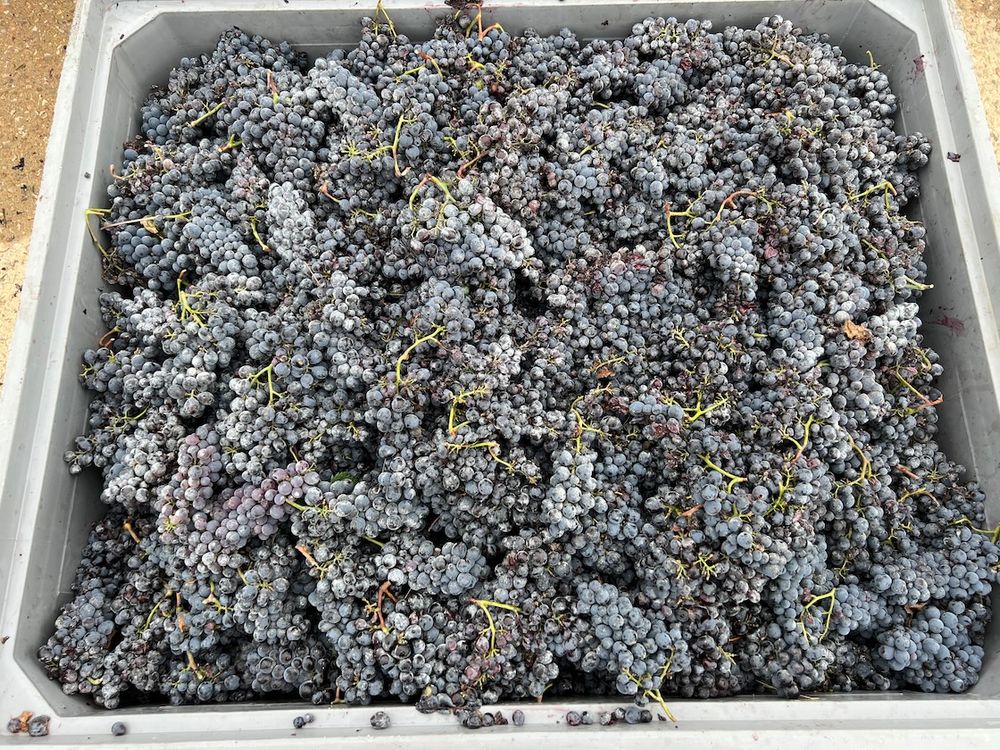
Immaculate Sangiovese prior to further sorting on the sorting table
The quest for excellence is noticeable straight away from the amount of bunches that have been discarded in the vineyard – 30% sorted this way after numerous passes – to the meticulous sorting that’s going on at cellar door before the pristine, organic berries plummet into fermentation tanks below.
The winery itself is a thing of beauty, hewn out of rock with the displaced boulders used to build walls above ground, the cuverie and ageing cellar sited below ground to utilise natural cooling. Surrounded by wild shrubs and flowers it is perfectly integrated into the landscape.
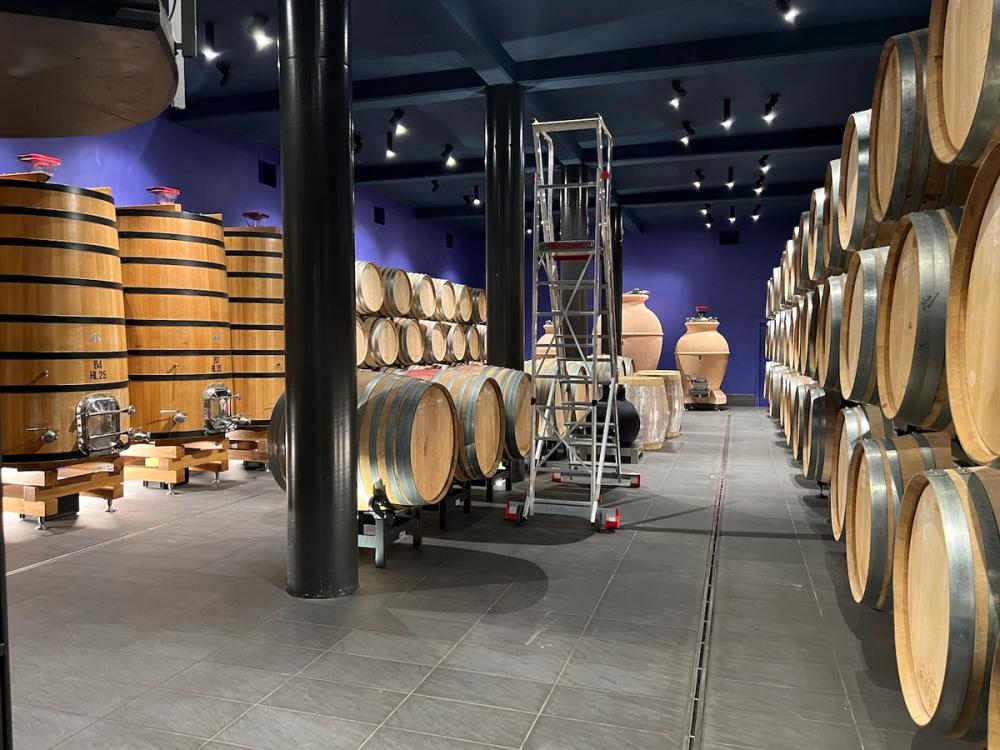
The Giodo cellar, behind me are the fermenters and concrete tanks
Inside the cellar, are steel fermenters, concrete vats, as well as terracotta and glass jars. For maturing his Sangiovese, the team uses a mixture of large tonneaux, standard barrels, and small, 700-litre oak ovals.
Carlo sums up his approach to winemaking, stressing its simplicity:
“What is it that we do? Nothing, we do absolutely nothing. Nature is the one that decides what to do. We simply follow the directions that nature gives us. Once in a while we thin the leaves, sometimes we drop a few clusters, and then we harvest.”
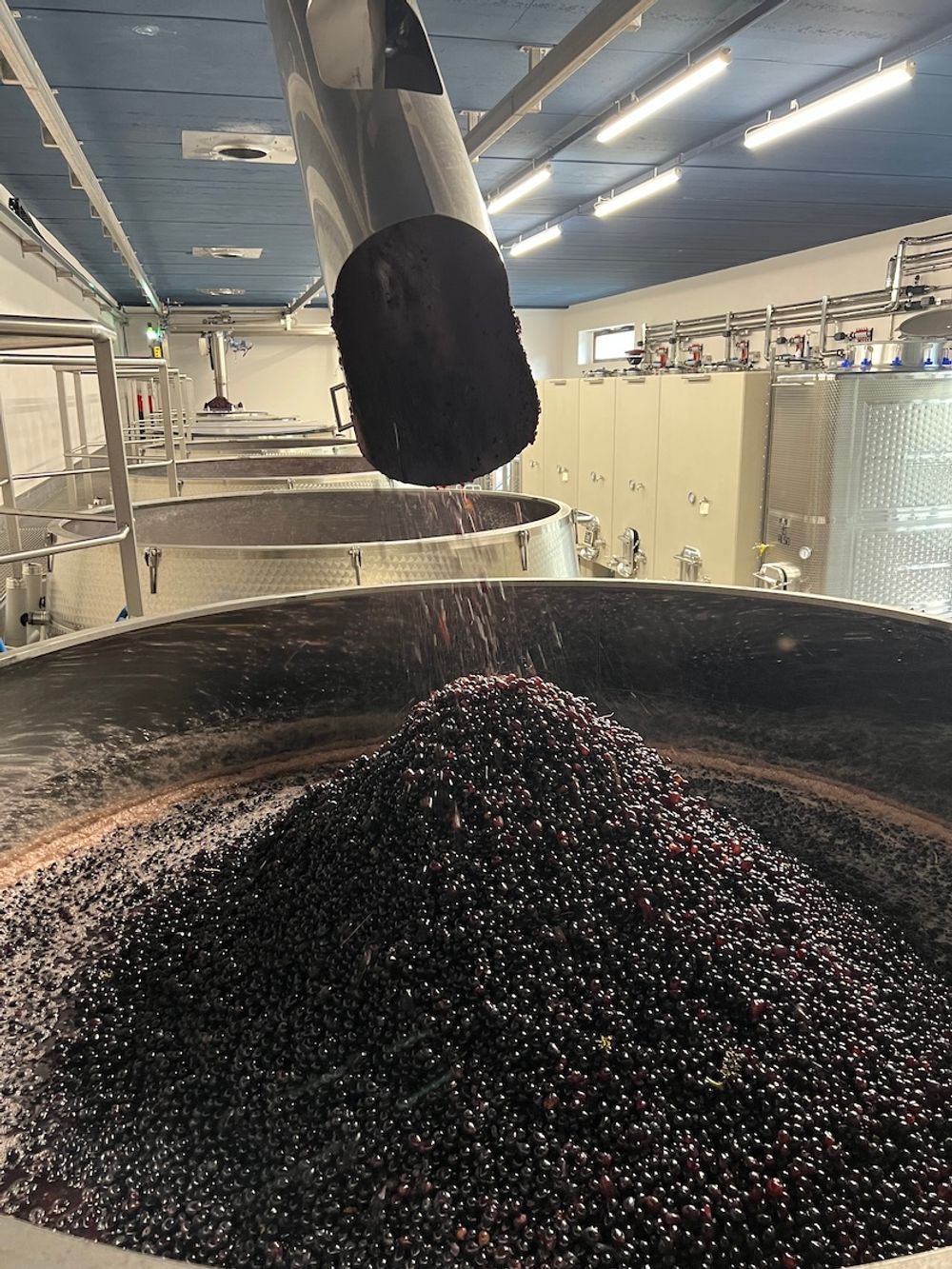
Things of beauty - from the sorting table above to the open-top fermenter below
“Then you know I don’t like pumps, I don’t like pipes, so everything goes down by gravity to these open-top tanks where we do punch-downs, délestages, 15-20 days of fermentations and maceration, and then French oak where the wine remains the time necessary for maturation, then we put together the final blend, whether for IGT or Brunello di Montalcino. We put it in concrete vats where it spends time in this ‘parlour’, evolving and developing all its aromas until it’s bottled. It remains in the bottle for a year more or less, and then the market tells us if the wine is fine or not.”
Let me tell you that the two wines are mighty fine and I urge you to try them, you will not be disappointed.
How were the latest wines tasting?
We tried four wines – two from Montalcino and two from the family’s vineyards on the slopes of Etna under the Alberelli di Giodo label.
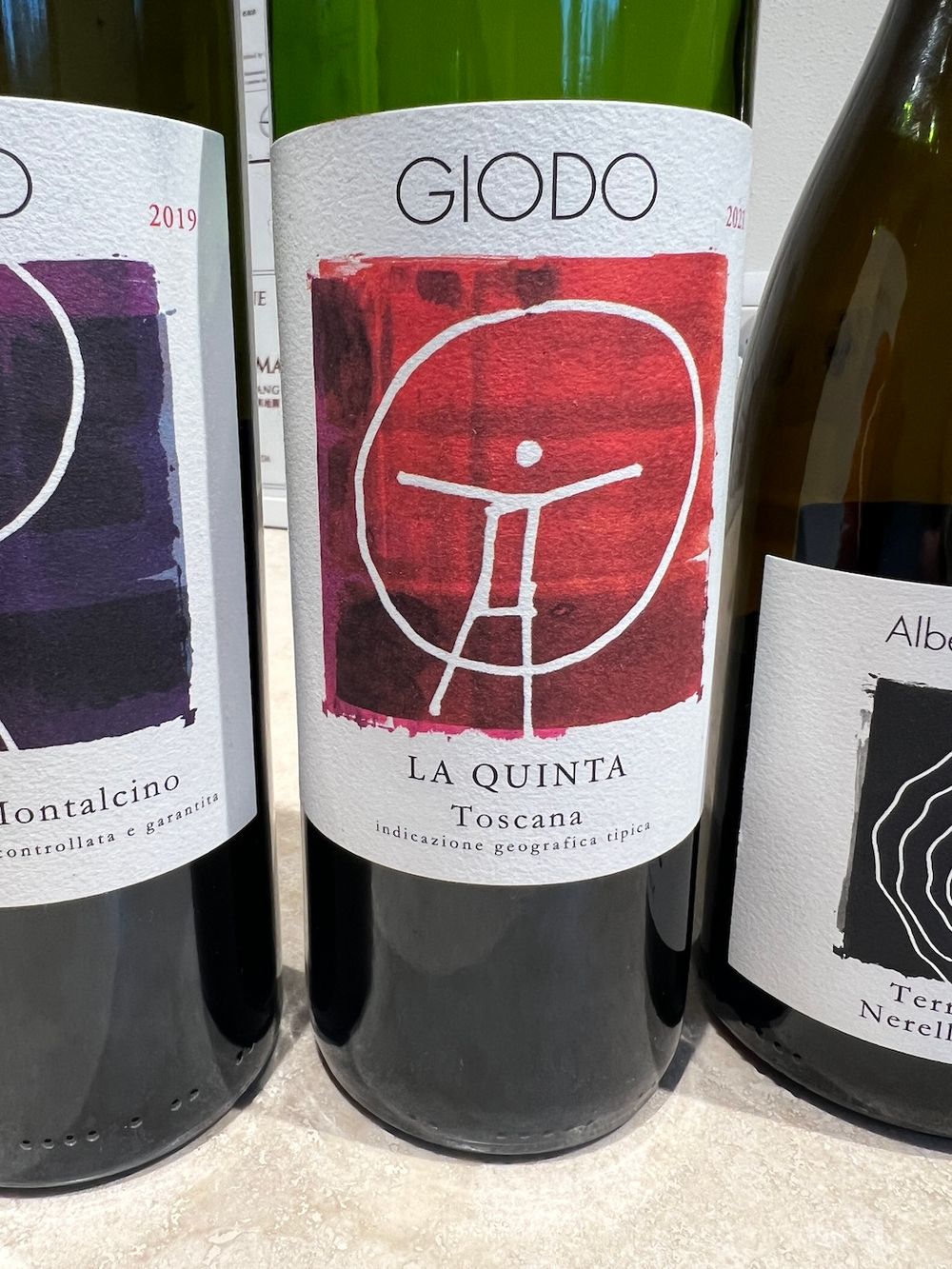
La Quinta, Toscana Rosso IGT 2021
Seven days fermentation with 13 days skin contact, matured for 12 months in 700-litre oak casks, 2,500 litre tapered oak tanks and 2,700 litre ‘cocciopesto’ amphorae, more time in concrete followed by six months in bottle. 14% abv, 5.9 g/l acidity
This wine, whose first vintage was 2012, is a more direct, fresher expression of Sangiovese than the Brunello and is aimed at earlier drinking, although the impressive backbone of acidity will see it age well.
Open, fresh, easy-going, with assertive acidity and very fine-grained ripe tannins. Bright cherry red in the glass; intoxicating, beautiful aromas of red berries, rose hip; on the palate which is complex you find little wild cherries, balsamic, savoury notes. Beautifully elegant with such purity, grip, and spice on the long finish.
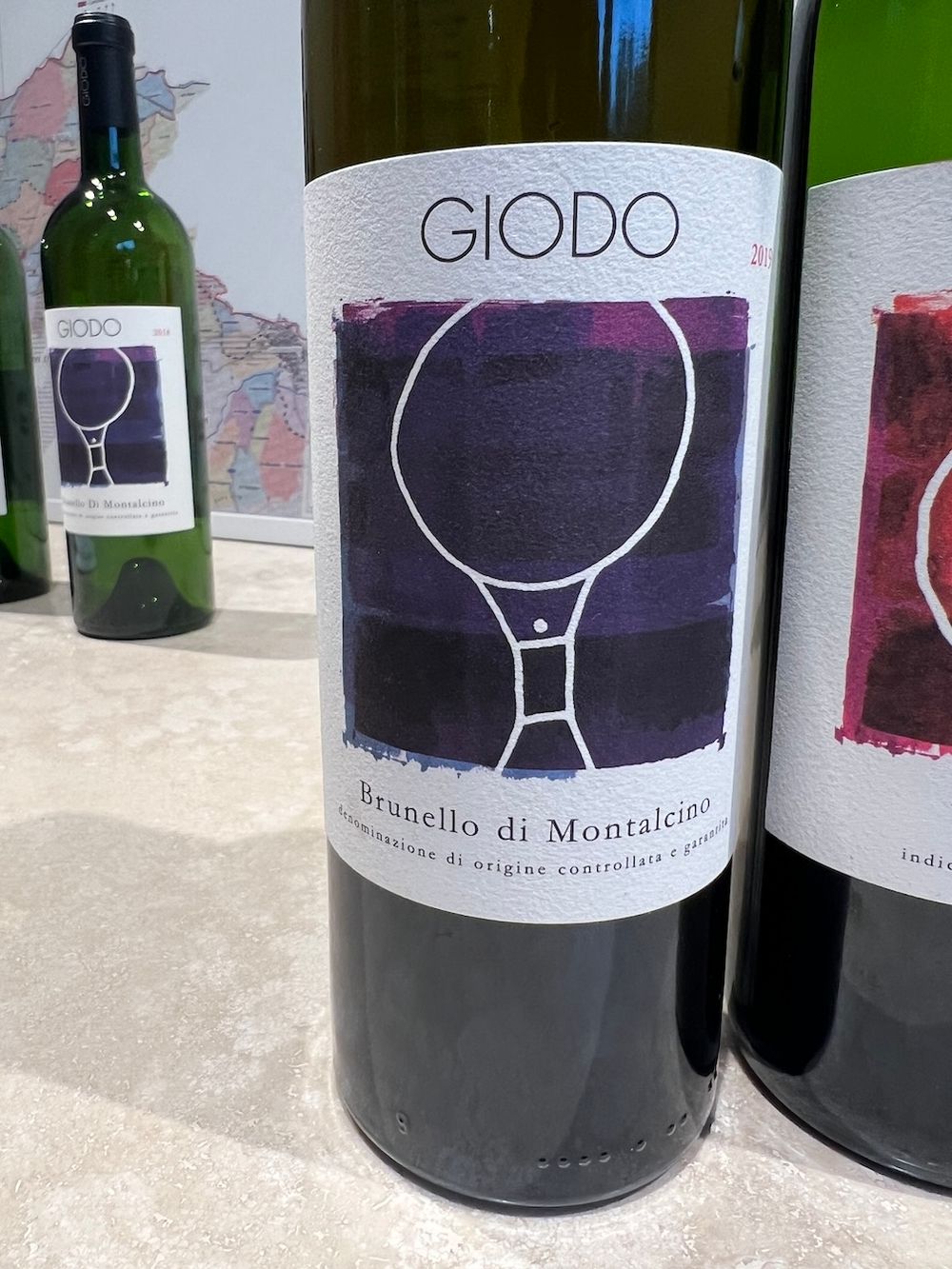
Giodo Brunello di Montalcino 2019
Nine days fermentation with 20 days skin contact, matured for 30 months in 500, 700 and 2,500-litre oak casks, followed by more time in concrete vats and 18 months in bottle. 14% abv, 6 g/l acidity.
First vintage of this wine was the 2009, the second, 2010, got 100 points from critic James Suckling as has the 2015 and 2016, this 2019 garnered 99 points and 100 points from Raffaele Vecchione who said “Elegance and more elegance, in a wine that achieves perfection. A perfect wine, a divine wine.”
Hard to disagree – I loved its quiet intensity. Almost see through to look at; the nose is stunning – complex and thought-provoking, beautiful and layered, pretty and brooding. At first there’s wild strawberries, cedar, soil, sweet orange, and then a whiff of smoke? The palate has the most incredible marriage between acidity and beautifully integrated tannin, it is open, fresh, elegant, envelopes the mouth with an intense, muscular structure quietly lurking underneath, then darker, savoury notes and suggestions of liquorice.
It's the register on your palate and the way it sits in your mouth that is extraordinary. Bravo!!
Giodo - now on Etna
Carlo has also purchased one hecatare of vines on the slopes of Etna and here he makes two wines under the Alberelli di Giodo label. Both hugely impressive:
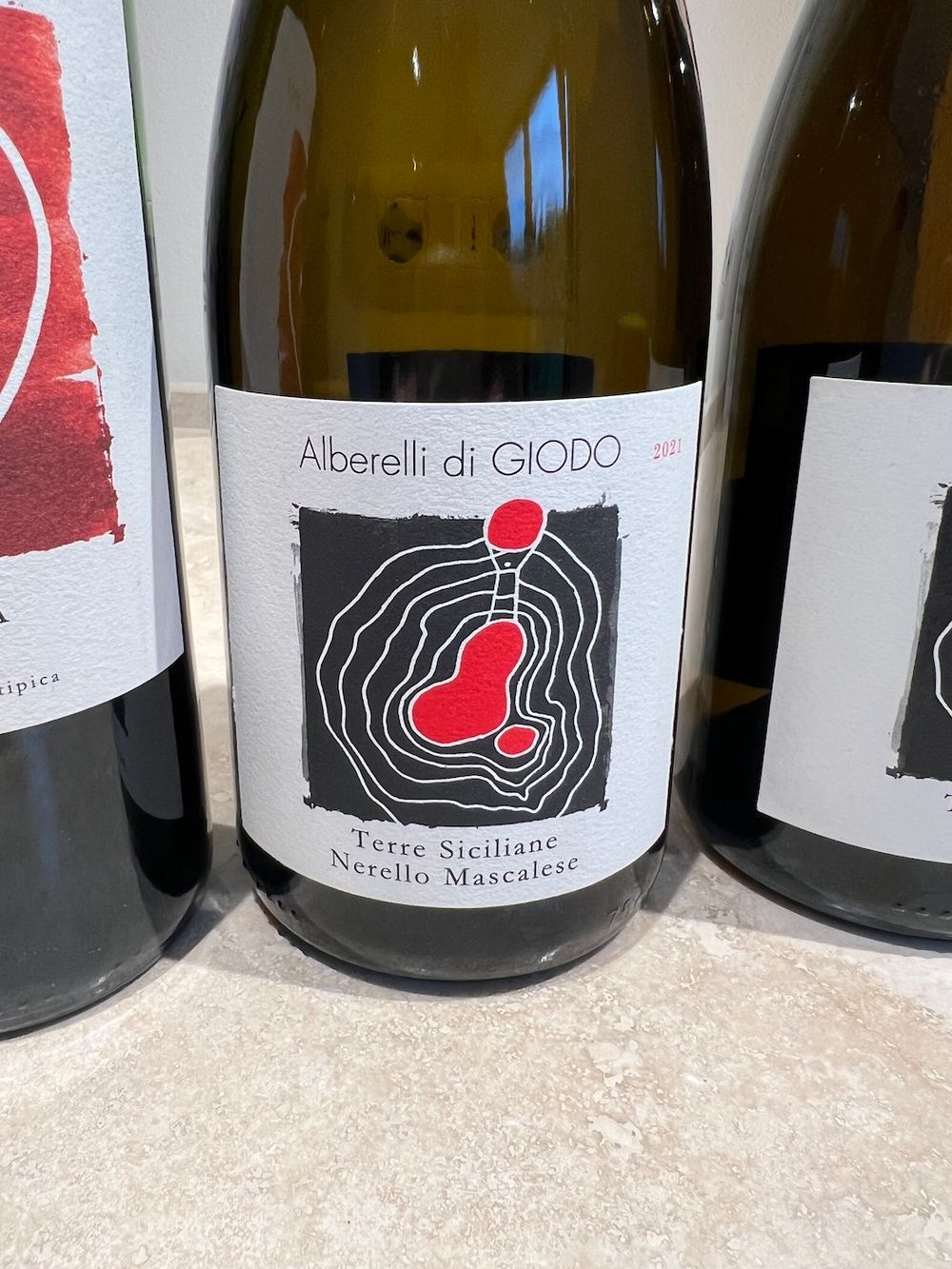
Nerello Mascalese Terre Siciliane, Alberelli di Giodo 2021
The first vintage of this hugely gluggable red was in 2016.Light cherry red, you smell herbs in the sun, red liquorice. On the palate the wine is bright, open, rounded, really glu glu, volcanic with that real stony Etna quality to the texture, with quite a dry, powdery finish.
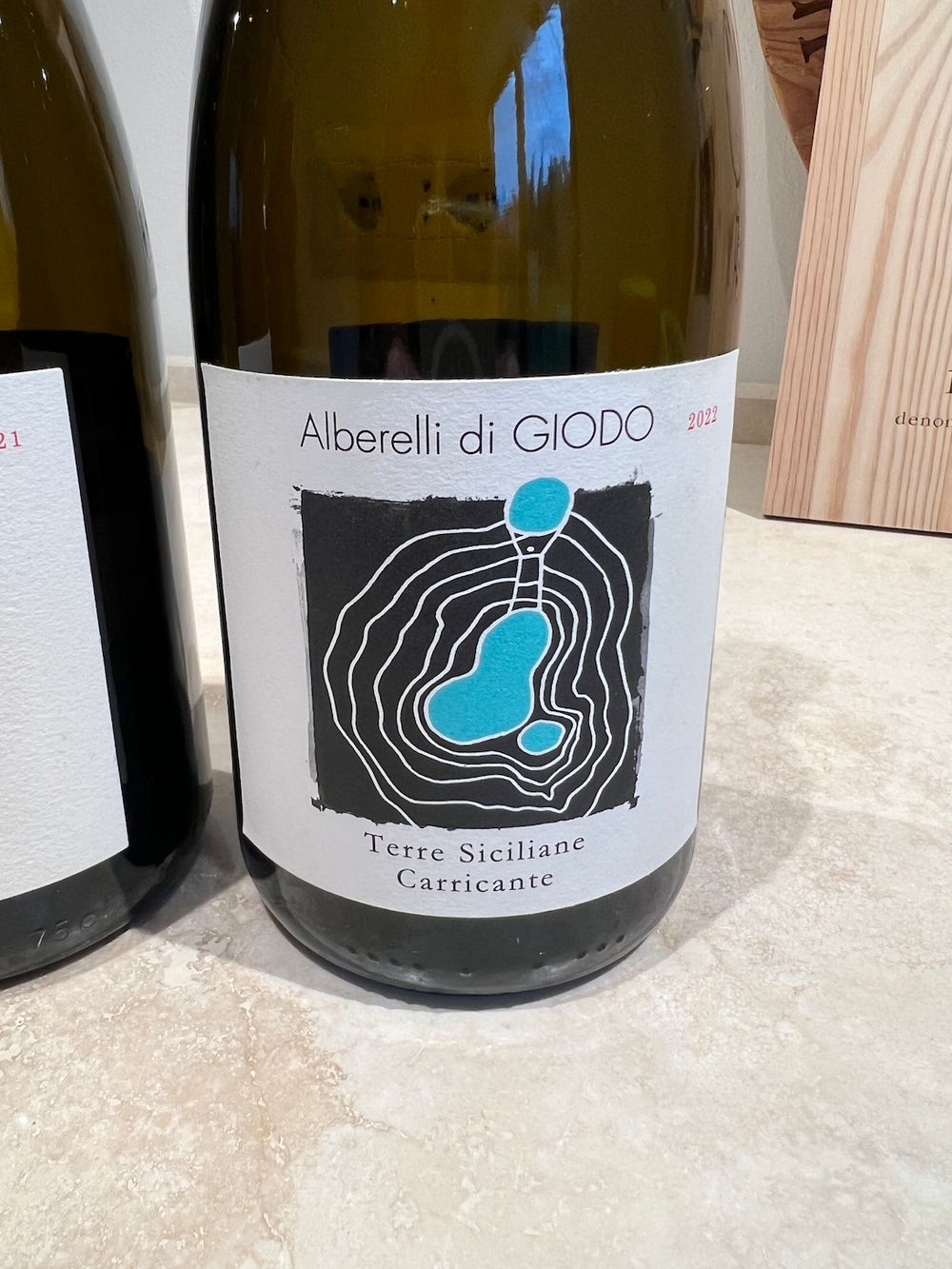
Carricante Terre Siciliane, Alberelli di Giodo 2022
The first vintage of this white was 2020 – it has six months on lees, one year in bottle. Deep straw coloured, this has a lovely fruit profile, beautiful nose, pretty and floral. In the mouth the wine is rounded, has breadth and power, generous with a range of fruits – green orange, the lees giving a touch of tropical fruit, but still retaining a freshness.
The wines of Giodo are imported and sold in the UK through Lea & Sandeman.
